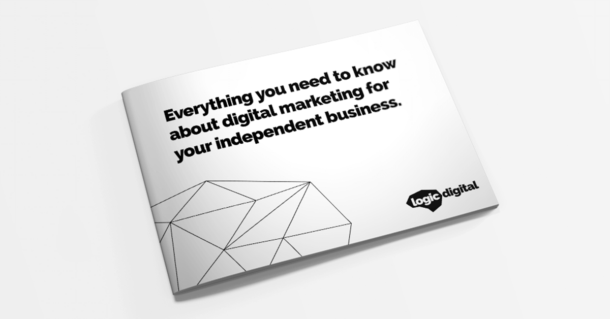 Advertising online is a crucial part of most businesses’ digital marketing strategy but with so many different advertising platforms to explore, which route should businesses take? We’re going to explore two of the most popular advertising methods – Search Ads and Social Ads.
Advertising online is a crucial part of most businesses’ digital marketing strategy but with so many different advertising platforms to explore, which route should businesses take? We’re going to explore two of the most popular advertising methods – Search Ads and Social Ads.
What are Search Ads?
Search ads appear in search engine results (mainly Google but there are also systems that can display ads on Bing, Yahoo and AOL) in response to a query that a user searches for.
A few of these ads often appear before the organic search results with a few also appearing at the bottom of the results page.
What are Social Ads?
Social ads can appear in a variety of formats depending on the social media platform (the most popular being Facebook, with Twitter, LinkedIn & Instagram all in the top 10) however they are generally displayed within the main content feed where users spend the majority of their time browsing content.
There are some crucial differences between search ads and social ads beyond the platforms where they appear, including:
- Targeting
- Competitor Research
- Creative
- Cost
- Objective
Targeting
As mentioned above, search ads are shown when they are relevant to the search query that a user has entered. These are targeted based on keywords that the advertiser has deemed relevant to their offer. This makes it much easier to capture people who have an intent to buy – generally people who search for a product or service online are looking to purchase in the near future.
Since these users are further along in the customer journey, conversion rates are often higher on search ads compared to ads that target users at an earlier stage.
Unlike search ads, social ads target users based on demographic information and interests – while this information can also be used when targeting search ads, keywords are arguably the most important element. Targeting ads on social media revolves much more around your target personas compared to search ads e.g. a clothing brand can target users who are interested in “fashion” on social media without the user needing to already be aware of their brand or a product they stock.
For this reason, social ads are much better at reaching users at the early stages of their customer journey. This can be a valuable way for smaller or niche brands to raise awareness that can influence purchase decisions later in the journey.
Competitor Research

The difference in targeting also makes a difference to how much effort you need to put into your competitor research.
Since search ads are primarily triggered by keywords in the search query, you can see relevant ads from competitors by simply entering your keywords in the search engine yourself.
However, if you are not the target audience for a brand, you will find it much more difficult to see a competitors ad while scrolling on your social media feed. Instead you’ll likely need to use a social ad competitor research tool.
Creative
Search ads are formatted to reflect the style of normal search results so these only make use of text throughout their headlines, descriptions and extensions. While the top positioning combined with great ad copy can certainly make them stand out, the similar nature of all results on the page can make them blend into the rest of the page.
In contrast, social ads are heavily visual with most ad types making use of images or video. While these ads still often replicate the look of organic posts on the social media platform, all marketers know that a strong image or video can make a user stop scrolling and take interest in what you have to say. Visual messages often leave a longer lasting impression on users compared to text based information.
The objective of these ad types should be taken into consideration when thinking about the creative. Ads targeting users who have a level of intent simply need to clearly answer that intent – e.g. if a user searches for “green shoes size 7” a search ad will simply need to highlight that they stock green shoes in that size along with any other information that might be useful to the audience such as “next day delivery available” or “70% off”. Whereas ads that target audiences who haven’t really started their journey yet on social media need to provide a good incentive for users to look into this more by telling a compelling story about their brand, products and benefits.
Cost

There are many factors beyond the platform that influence the cost of an ad but generally as a rule of thumb it’s safe to assume that an ad targeting a user further along in their customer journey will be more expensive (because they’re more valuable to a business) than a user at the very start of the journey. By this logic, social ads are generally considered to be cheaper since they’re primarily used to drive awareness early on in the customer journey.
Objectives
The best ad type for your business objectives:
Awareness – Social Ads
Leads, Sign Ups & Registrations – Search Ads + Social Ads
Purchases & Immediate Contact – Search Ads
It ultimately comes down to intent.
With a search ad you are putting your ad in front of someone based on their search request.
With a social ad you are putting you ad in front of someone based on their profile as part of an audience.
Therefore the objective of search ads is to convert someone looking for something specific while the objective of social ads is to build and generate interest.
What you’ll notice from these is that each objective and recommendation is related to a separate stage of the marketing funnel – and as thus the overall recommendation is that if you want to really reach your audience where it matters (i.e. everywhere) then you should use a combination of search and social ads.
Not only can you use multiple platforms to reach your audience wherever they are, you can also use the data from these individual platforms to enhance the performance of your ads. You can gather information about the best performing demographics and apply it to the other platforms, you can also use pixels & re-targeting to ensure you reach those same users repeatedly across platforms as well as similar/lookalike audiences of those clicking on ads and converting to maximise your reach.
Paid channels are essential in modern marketing but your investment will be wasted if you don’t spend it on the right ad formats. Be clear on what your objectives are and tailor your paid strategy accordingly: if your aim is to raise awareness – choose a broader advertising medium like social ads; if you’re aim is to reach people looking for businesses like your own, you’ll be better off with the more specific targeting options available in search ads. For support with your paid strategy, feel free to get in touch with our team or follow us on LinkedIn for more guidance and insights.





